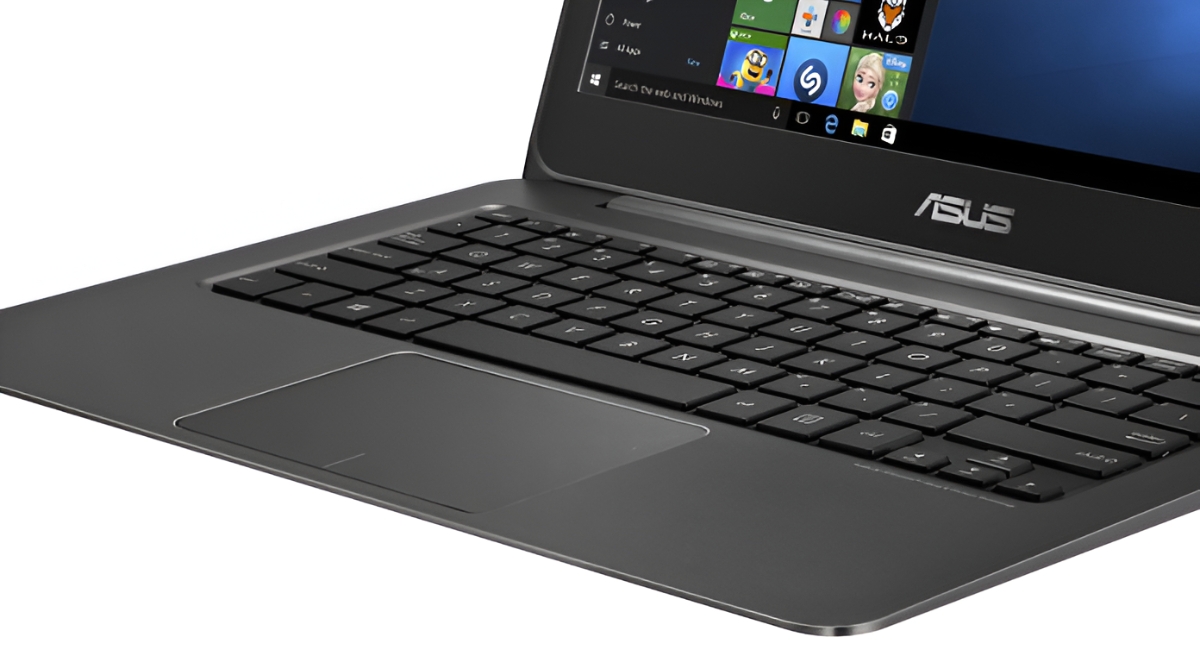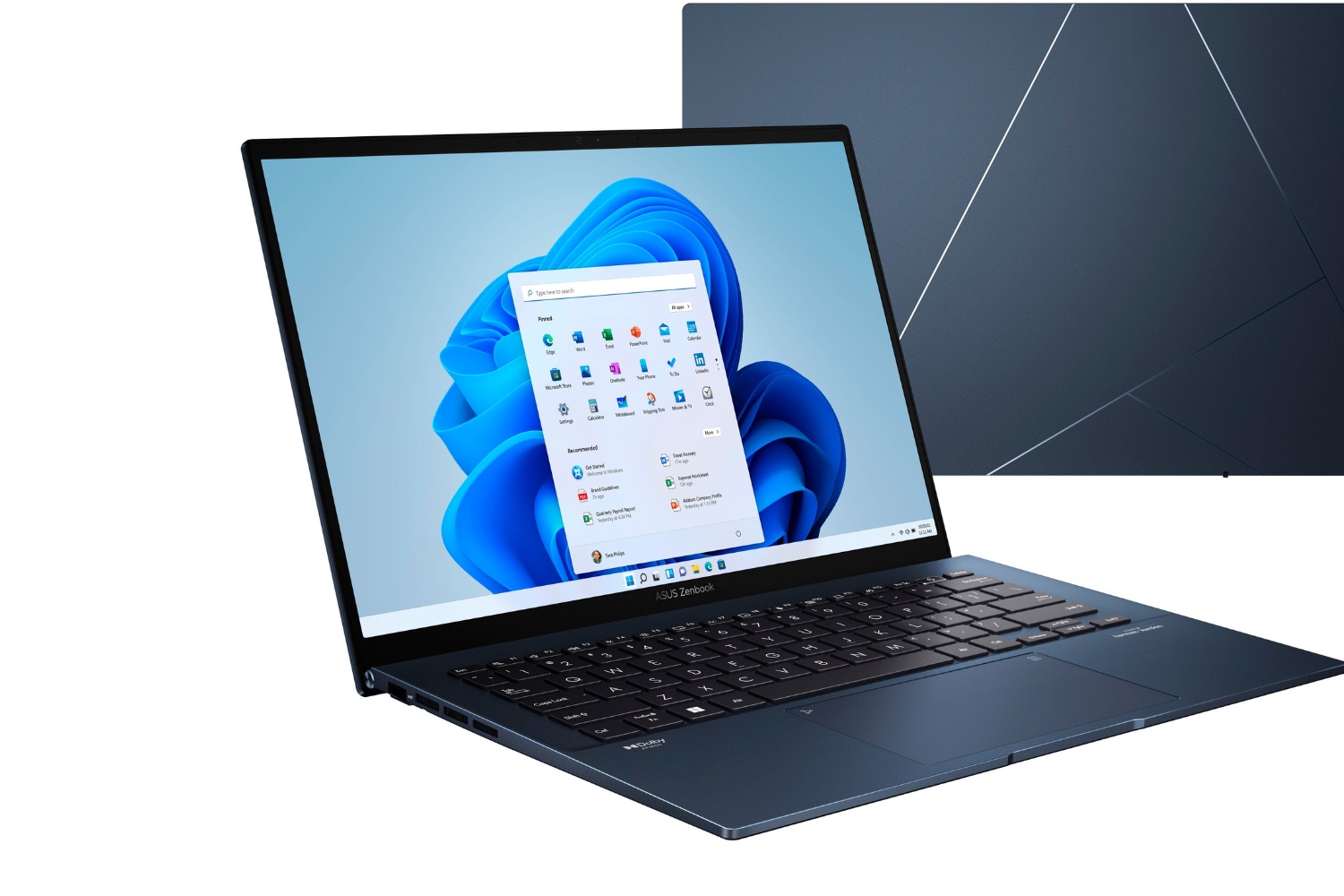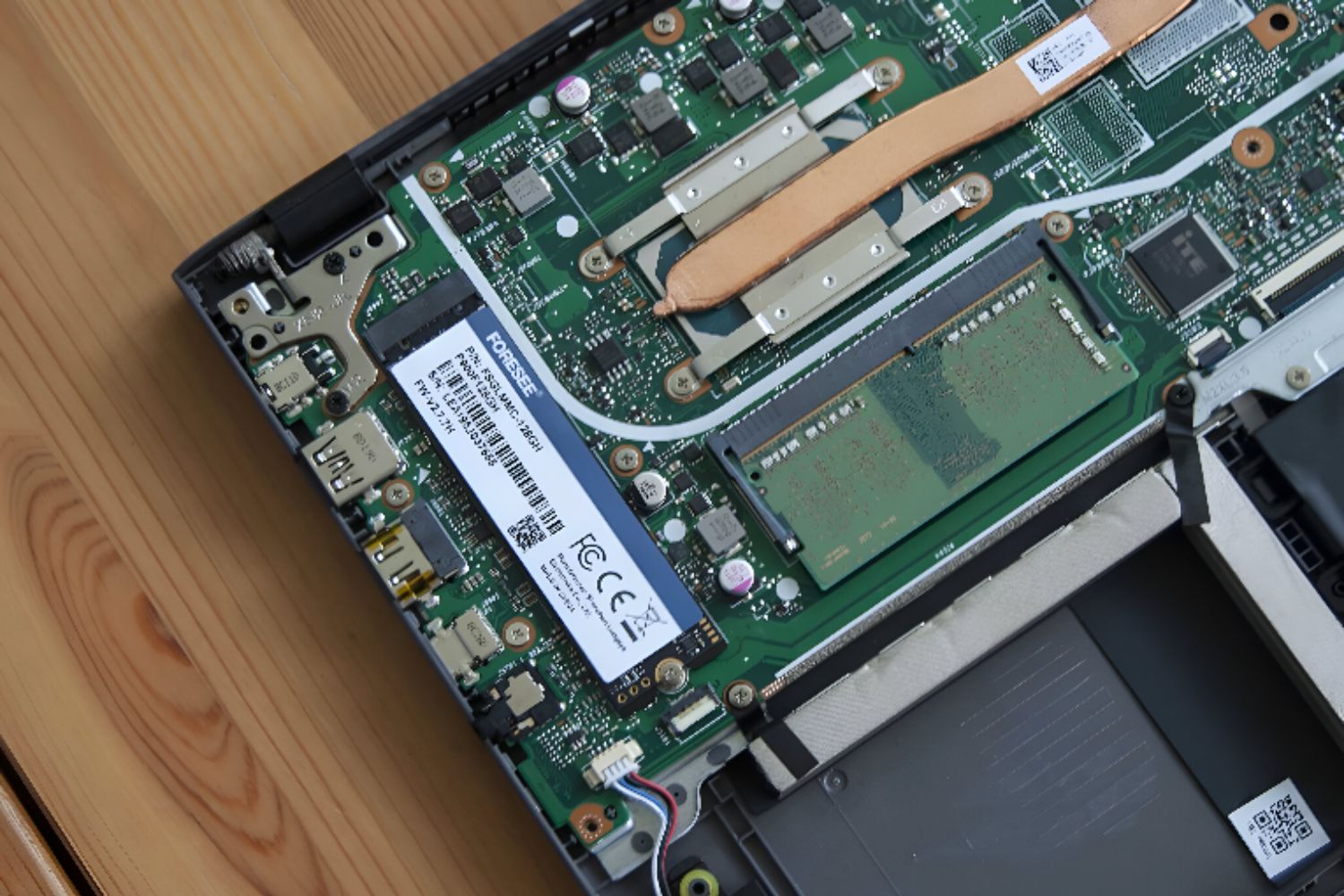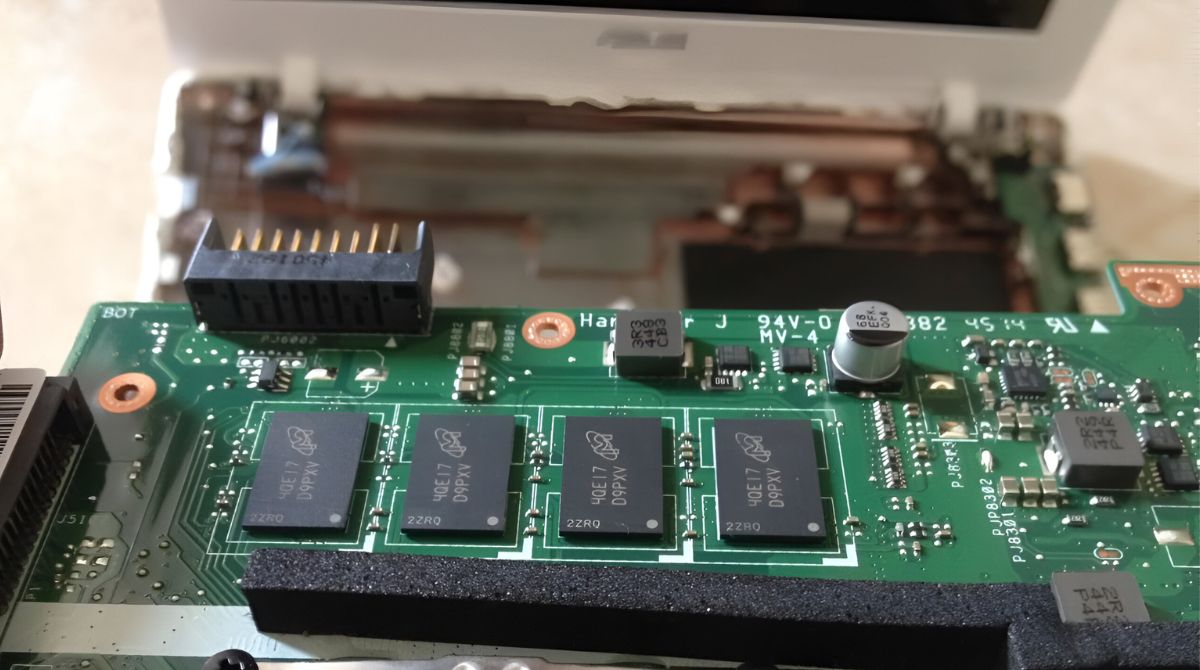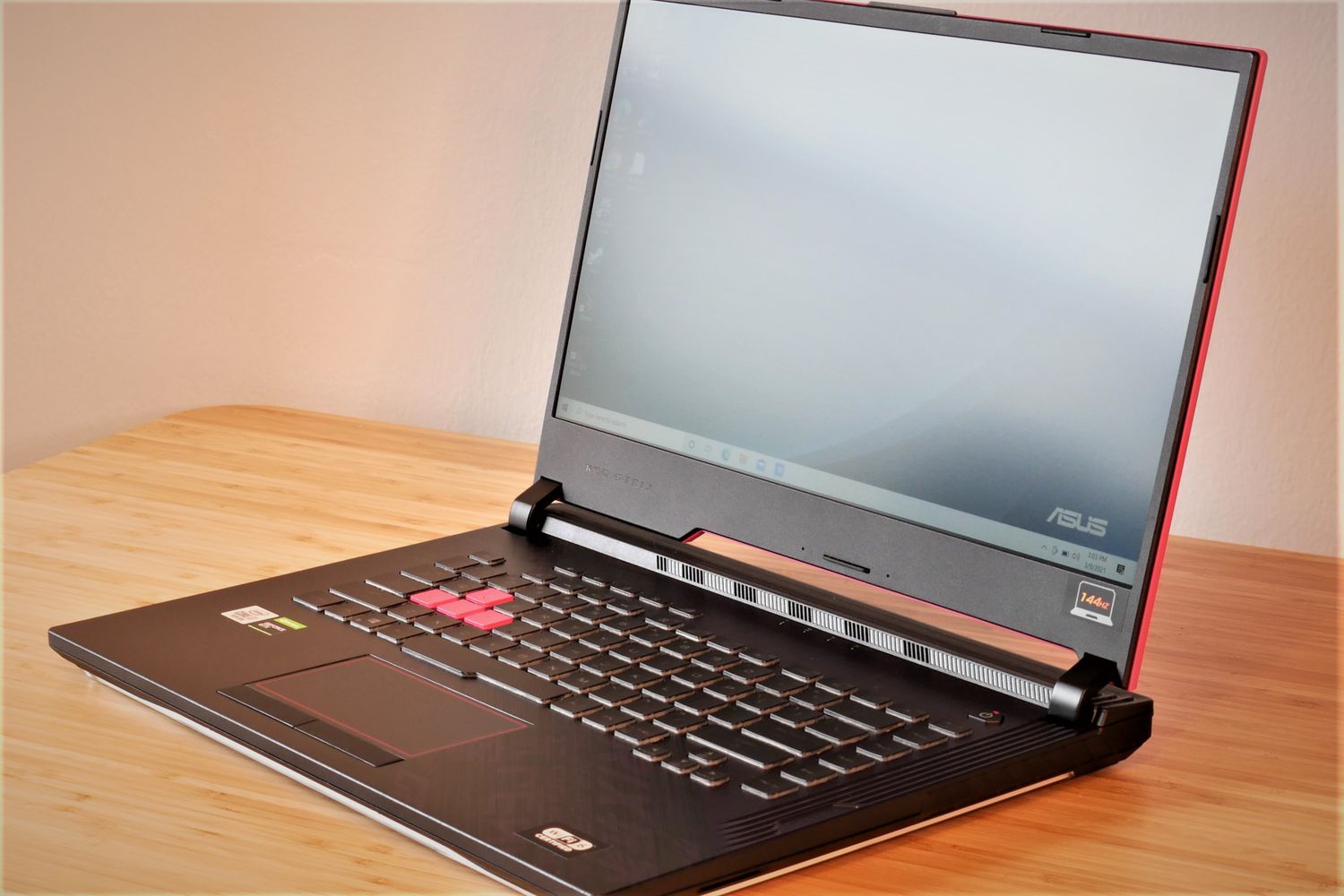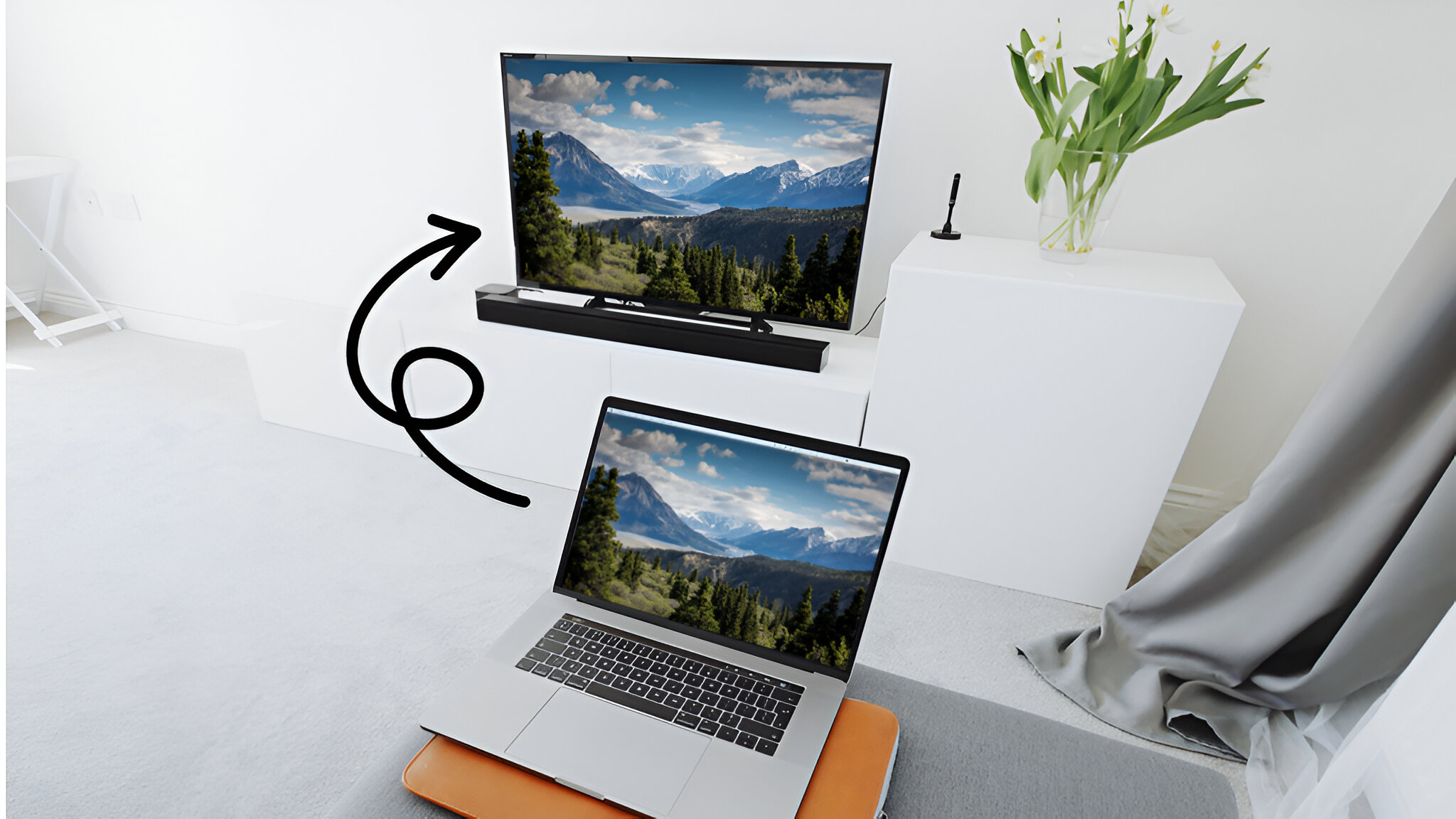Introduction
Is your ASUS Ultrabook running slower than usual? Don’t worry, you’re not alone. Over time, computers can start to lag and become sluggish due to various reasons, such as outdated drivers, unnecessary programs running in the background, or insufficient hardware specifications.
Fortunately, there are several steps you can take to speed up your ASUS Ultrabook and restore its performance. In this guide, we’ll walk you through some effective methods to optimize your Ultrabook’s speed and ensure a smooth computing experience.
No one likes waiting for their computer to boot up or for programs to load. By implementing the following tips and tricks, you can significantly improve the overall speed and responsiveness of your ASUS Ultrabook. Whether you’re a tech-savvy user or a beginner, these steps are easy to follow and will help you get the most out of your Ultrabook.
So, without further ado, let’s dive into the solutions and get your ASUS Ultrabook back to its blazing fast performance!
Uninstall Unnecessary Programs
Over time, our computers tend to accumulate a lot of unnecessary programs that we no longer use or need. These programs take up valuable space on our hard drives and can also slow down system performance. By uninstalling these unused programs, you can free up disk space and improve the speed of your ASUS Ultrabook.
To begin, navigate to the Control Panel on your Ultrabook. You can access it by clicking the “Start” button and searching for “Control Panel”. Once in the Control Panel, look for the “Programs” or “Programs and Features” option. Click on it to open the list of installed programs.
From here, carefully review the list of installed programs and identify those that you no longer use or need. Be cautious not to uninstall any important system programs or drivers. Select the program you wish to uninstall and click on the “Uninstall” button.
Follow the on-screen instructions to complete the uninstallation process. Once it’s done, you may need to restart your ASUS Ultrabook for the changes to take effect.
It is advisable to regularly perform this cleanup routine and uninstall any programs that you haven’t used in the past few months. This will not only speed up your Ultrabook but also help keep your system organized and clutter-free.
In addition to freeing up disk space, the uninstallation of unnecessary programs can improve system performance by reducing the number of background processes running on your Ultrabook. This, in turn, can lead to faster startup times and smoother multitasking.
Remember to exercise caution and only uninstall programs that you are certain you no longer need. If you’re unsure about a program’s importance, it’s always a good idea to do a quick internet search to ensure that it won’t impact the functionality of your Ultrabook.
Disable Startup Programs
One common reason for a slow boot-up process on your ASUS Ultrabook is a long list of startup programs. These are the applications that automatically launch when you turn on your computer and can significantly slow down your system’s startup time. By disabling unnecessary startup programs, you can improve the boot-up speed and overall performance of your Ultrabook.
To manage startup programs, you can use the built-in Task Manager on your ASUS Ultrabook. Simply press “Ctrl + Shift + Esc” to open the Task Manager or right-click on the taskbar and select “Task Manager” from the options.
Once the Task Manager is open, navigate to the “Startup” tab. Here, you’ll find a list of programs that are set to launch during system startup. Take a careful look at the list and identify any programs that you don’t need to start automatically.
To disable a startup program, simply right-click on it and choose “Disable”. Be cautious not to disable any essential system programs or drivers.
Disabling unnecessary startup programs will not uninstall them from your Ultrabook; it will only prevent them from launching automatically at startup. You can still open these programs manually whenever you need them.
Reducing the number of startup programs will not only improve the boot-up time of your ASUS Ultrabook but also free up system resources, allowing your Ultrabook to allocate more power to running essential tasks efficiently.
Remember to periodically review and update your list of startup programs as new applications may be added over time. By keeping this list lean and focused on essential programs, you can ensure that your Ultrabook starts up quickly and efficiently.
Clean up Disk Space
As you use your ASUS Ultrabook, files and data accumulate on your hard drive, taking up valuable disk space. This can lead to slower system performance and reduced storage capacity. By cleaning up your disk space, you can improve the overall speed and efficiency of your Ultrabook.
To begin cleaning up disk space, you can utilize the built-in Disk Cleanup tool on your ASUS Ultrabook. You can access this tool by clicking on the “Start” button, searching for “Disk Cleanup,” and selecting the appropriate option.
Once the Disk Cleanup tool opens, it will analyze your hard drive and present you with a list of files that can be safely deleted to free up space. These files can include temporary files, system files, and files in the recycle bin.
Select the categories of files you want to delete by checking the corresponding boxes. Be cautious not to delete any important system files or personal documents. Review the list carefully before proceeding.
After selecting the desired file categories, click the “OK” button to initiate the cleanup process. Depending on the amount of data to be removed, this process may take a few minutes.
In addition to using the Disk Cleanup tool, you can manually delete unnecessary files and folders from your Ultrabook. Look for files such as outdated documents, unused program installers, and large media files that you no longer need.
Remember to empty your recycle bin regularly, as deleted files still occupy space in this folder until it is emptied.
Cleaning up disk space not only improves the performance of your ASUS Ultrabook by freeing up storage, but it also helps organize your files and makes it easier to find and access important data. Regularly performing disk cleanups is essential to ensure optimal Ultrabook performance.
Update Drivers
Outdated drivers can significantly impact the performance of your ASUS Ultrabook. Drivers act as a bridge between your hardware and software, facilitating communication and ensuring proper functionality. By keeping your drivers up to date, you can enhance the overall performance and stability of your Ultrabook.
To update drivers on your ASUS Ultrabook, you have a few options. The first option is to visit the official ASUS website and navigate to the support section. Here, you can search for the drivers specific to your model and download the latest versions.
Alternatively, you can use third-party driver update software. These programs automatically scan your system, identify outdated drivers, and provide you with the option to update them with a single click. Some well-known driver update software includes Driver Booster, Driver Easy, and Snappy Driver Installer.
Before updating drivers, always ensure that you are downloading them from trusted sources. Stick to official manufacturer websites or reputable software platforms to avoid potentially harmful or incompatible drivers.
It is also a good practice to create a system restore point before making any changes to your drivers. This allows you to revert to a previous working state if any issues occur during the driver update process.
Regularly updating your drivers ensures that your Ultrabook is utilizing the latest features and bug fixes provided by the manufacturers. This can result in improved device performance, enhanced compatibility with software applications, and increased system stability.
Remember that driver updates should be performed selectively – if your Ultrabook is functioning properly and you haven’t experienced any issues, there may not be a need to update every driver. Focus on updating drivers that directly impact performance, such as graphics drivers or network drivers.
By keeping your drivers up to date, you can optimize the performance of your ASUS Ultrabook, resolve compatibility issues, and ensure a smoother and more efficient computing experience.
Disable Visual Effects
Visual effects, such as animations and transparency settings, can add a visually appealing touch to your ASUS Ultrabook. However, these effects consume system resources and can slow down your computer’s performance. Disabling unnecessary visual effects can improve the overall speed and responsiveness of your Ultrabook.
To disable visual effects on your ASUS Ultrabook, you can access the System Properties settings. Right-click on the “This PC” or “My Computer” icon on your desktop and select “Properties”.
In the System Properties window, click on the “Advanced system settings” option. This will open the System Properties dialog box with the “Advanced” tab selected.
Under the “Performance” section, click on the “Settings” button. This will open the Performance Options window, where you can adjust various visual effects settings.
By default, your Ultrabook might be using the “Let Windows choose what’s best for my computer” setting. To disable visual effects and improve performance, select the “Adjust for best performance” option. This will uncheck all the visual effects options.
If you still want to keep some visual effects, you can go through the list and selectively choose the ones you prefer. For example, you can disable animations, fade effects, and transparency while leaving other options enabled.
Once you have made your desired changes, click the “Apply” button to save the settings and close the Performance Options window.
Disabling visual effects can enhance the speed and responsiveness of your ASUS Ultrabook, especially when running resource-intensive tasks and applications. By reducing the graphical load on your system, you allow your Ultrabook to allocate more resources towards essential tasks, resulting in improved performance.
Keep in mind that turning off visual effects may affect the visual aesthetics of your operating system. However, the trade-off is worth it if you prioritize speed and performance over visual bells and whistles.
Remember to periodically review and adjust your visual effects settings to ensure that they align with your usage requirements and keep your Ultrabook running smoothly.
Use a Solid State Drive (SSD)
If you’re looking for a significant boost in the speed and performance of your ASUS Ultrabook, consider upgrading to a solid state drive (SSD). Unlike traditional hard disk drives (HDDs), SSDs use flash memory to store data, resulting in faster access times and improved overall system performance.
Compared to HDDs, SSDs have no moving parts, which means they are more resistant to physical damage and less prone to failure. Additionally, SSDs offer faster read and write speeds, reducing the time it takes to load applications, transfer files, and boot up your Ultrabook.
Before purchasing an SSD, make sure to check the specifications and compatibility with your ASUS Ultrabook model. Most Ultrabooks come with built-in SSD storage, but if yours doesn’t, you can typically upgrade it by replacing your existing hard drive with an SSD.
While the process of migrating your operating system and data from an HDD to an SSD can be complex, many manufacturers provide migration software or guides to facilitate the transition. Alternatively, you can seek professional assistance to ensure a smooth and efficient upgrade process.
Once you’ve installed the SSD, you’ll be amazed at the difference in performance. Your ASUS Ultrabook will boot up faster, applications will launch almost instantaneously, and file transfers will be significantly quicker.
It’s important to note that SSDs typically have smaller storage capacities compared to HDDs, so it’s essential to manage your storage effectively. Consider utilizing external storage options or cloud storage services for larger files or media to maximize the available space on your SSD.
By upgrading to an SSD, you can future-proof your ASUS Ultrabook and enjoy a substantial performance boost. The improved speed and responsiveness will allow you to work more efficiently, multitask seamlessly, and enjoy a smoother computing experience overall.
If you’re looking to maximize the performance of your Ultrabook, investing in an SSD is one of the most effective upgrades you can make. Not only will it breathe new life into your ASUS Ultrabook, but it will also significantly enhance your productivity and user experience.
Upgrade RAM
If you find that your ASUS Ultrabook is struggling to handle multiple tasks or running memory-intensive applications, upgrading the Random Access Memory (RAM) can significantly improve its performance. RAM is responsible for temporarily storing data that your Ultrabook needs to access quickly. By increasing the amount of RAM, you allow your Ultrabook to handle more data simultaneously, resulting in smoother multitasking and improved overall speed.
Before upgrading your RAM, ensure that your Ultrabook is compatible with the type and capacity of RAM you plan to install. Check the specifications of your Ultrabook or consult the manufacturer’s website or user manual to determine the maximum RAM capacity supported by your Ultrabook model.
Once you have confirmed compatibility, you can purchase compatible RAM modules from reputable manufacturers or authorized retailers. In most cases, upgrading the RAM is a straightforward process that involves opening the back panel of your Ultrabook and inserting the new RAM module into the available slot.
It’s important to note that some Ultrabooks have soldered RAM, which means the RAM modules are permanently attached to the motherboard and cannot be upgraded. If your Ultrabook falls into this category, unfortunately, you won’t be able to upgrade the RAM.
When selecting the appropriate RAM capacity, consider your typical usage patterns and the requirements of the applications you frequently use. For basic tasks and general computing, 8GB of RAM is usually sufficient. However, if you engage in memory-intensive activities such as video editing or running virtual machines, consider upgrading to 16GB or even 32GB of RAM for optimal performance.
Once you’ve installed the additional RAM modules, restart your ASUS Ultrabook and check the system properties to ensure that the new RAM capacity is recognized. You can do this by right-clicking on the “This PC” or “My Computer” icon, selecting “Properties,” and reviewing the installed RAM in the system information.
With the upgraded RAM, you’ll experience faster application loading times, smoother multitasking, and an overall improvement in system responsiveness. Whether you’re a professional working with resource-intensive applications or a casual user seeking a snappier computing experience, upgrading your RAM can make a noticeable difference.
Keep in mind that upgrading the RAM is one of the most effective ways to improve performance, but it may not solve every performance issue. If you’re still experiencing significant slowdowns, consider implementing other performance optimization techniques or seeking professional assistance to diagnose and address any underlying issues.
Optimize Power Settings
Adjusting the power settings of your ASUS Ultrabook can have a significant impact on its performance and battery life. By optimizing the power settings, you can strike a balance between performance and energy efficiency, ensuring that your Ultrabook operates at its best in different usage scenarios.
To access the power settings on your Ultrabook, click on the battery icon located on the taskbar and select “Power & sleep settings” from the options.
Under the “Power & sleep” settings, you’ll find different power plans such as “Balanced” and “Power Saver”. These power plans are preconfigured to provide a balance between performance and energy savings.
By default, your Ultrabook may be using the “Balanced” power plan, which is generally suitable for most users. However, you can further customize the power plan to meet your specific needs.
To optimize power settings, click on the “Additional power settings” link, which will open the Power Options window. From here, you can adjust various settings that impact power consumption and performance.
For improved performance, consider setting the “Power Plan” to “High Performance”. This plan prioritizes performance over energy efficiency, ensuring that your Ultrabook utilizes maximum resources and runs at full capacity.
If you’re primarily concerned about maximizing battery life, you can choose the “Power Saver” power plan. This plan reduces power consumption by limiting the performance of your Ultrabook, which is ideal when you’re using your Ultrabook on-the-go or running low on battery.
Within the power plan settings, you can also customize advanced power options, such as processor power management, display brightness, and hard disk settings. Adjusting these settings according to your usage patterns and preferences allows you to fine-tune power management and performance optimization.
Keep in mind that opting for high-performance settings may result in increased power consumption and reduced battery life. It’s advisable to switch to a power-saving mode when you’re away from a power source or not requiring maximum performance.
Regularly review and optimize your power settings based on your usage patterns. Remember that finding the right balance between performance and energy efficiency is essential to ensure a seamless and efficient computing experience.
By optimizing power settings, you can prolong your battery life, enhance overall system performance, and customize your Ultrabook’s behavior to suit your specific needs and preferences.
Disable Background Apps and Processes
Background apps and processes running on your ASUS Ultrabook can consume valuable system resources, leading to slower performance and reduced efficiency. Disabling unnecessary background apps and processes can help free up resources and optimize the overall speed and responsiveness of your Ultrabook.
To manage background apps on your Ultrabook, navigate to the “Privacy” settings by clicking on the Start button, then selecting “Settings” followed by “Privacy”.
In the Privacy settings, click on the “Background apps” option located in the left sidebar. Here, you’ll see a list of applications that are allowed to run in the background.
Review the list of background apps and identify the ones that you don’t need running constantly. Toggle off the switch next to each app to disable it from running in the background.
Disabling unnecessary background apps not only frees up system resources but can also help improve your privacy and security by limiting the data that these apps can collect.
In addition to managing background apps, you can also use the Task Manager to control and disable unnecessary processes running in the background. To access the Task Manager, press “Ctrl + Shift + Esc” or right-click on the taskbar and select “Task Manager”.
In the Task Manager, switch to the “Processes” tab to view the list of active processes. Be cautious not to disable any essential system processes as this can cause stability or functionality issues.
Identify any suspicious or resource-intensive processes that are not required for your normal computer usage and right-click on them. Select “End Task” to terminate the selected process.
Disabling background apps and terminating unnecessary processes will help reduce system resource usage, improve overall performance, and reduce the strain on your CPU and RAM.
Be mindful that some apps and processes may restart or reactivate automatically, especially after a system restart. It’s a good idea to periodically review and manage background apps and processes to ensure optimal system performance.
By disabling unnecessary background apps and processes, you can reclaim system resources, reduce system overhead, and boost the speed and efficiency of your ASUS Ultrabook.









